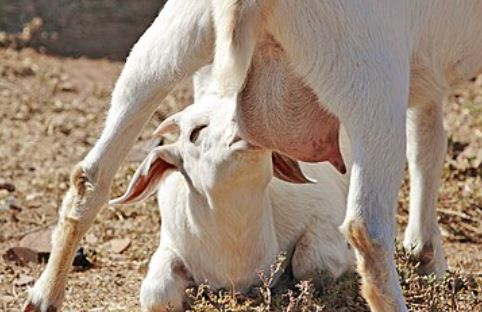Bird Flu’s Unseen Pathway: Mammary Glands Under Siege
In a startling revelation, scientists have discovered that the avian influenza virus, H5N1, can infect mammary glands in various mammals, including cows, mice, and ferrets. This unexpected finding, published in the journal Nature, challenges previous assumptions about the virus’s host range and raises concerns about its potential for wider transmission and zoonotic spillover events.
From Cows to Mice and Beyond: A Cross-Species Vulnerability
The study, led by virologist Amie Eisfeld of the University of Wisconsin–Madison, demonstrates that H5N1 isolates from both infected cows and humans can successfully invade and replicate in the mammary glands of mice and ferrets. This cross-species vulnerability suggests that mammary tissue, once thought to be an unlikely target for avian influenza, may be a more common site of infection than previously believed.
Milk as a Potential Transmission Route: A Public Health Concern
The detection of H5N1 in cow’s milk has raised alarm bells regarding the potential for transmission through consumption. While pasteurization effectively eliminates the virus, concerns remain about the risk of exposure for farm workers and those consuming raw milk products. Researchers are also closely monitoring the virus’s evolution in cows, as these animals could act as mixing vessels for avian and human influenza strains, potentially leading to the emergence of new, more transmissible variants.
Unraveling the Mystery: Cellular Mechanisms and Transmission Dynamics
Scientists are working tirelessly to understand the mechanisms behind H5N1’s affinity for mammary glands. One hypothesis suggests that the presence of a duck-like protein on the surface of mammary cells may provide an entry point for the virus. Additionally, researchers are investigating the role of contaminated milking equipment in facilitating the spread of the virus among cattle.
A Call for Vigilance: Mitigating the Risk
While the overall risk to the public remains low, these findings emphasize the need for heightened vigilance and proactive measures to mitigate the potential risks associated with H5N1’s expanding host range. Public health officials are urging farm workers to exercise caution and adhere to strict biosecurity protocols when handling potentially infected animals. Consumers are advised to avoid raw milk products and to practice good hygiene.
Key Takeaways:
| Key Point | Description |
|---|---|
| H5N1 virus can infect mammary glands. | This finding challenges previous assumptions about the virus’s host range. |
| Milk could be a potential transmission route. | Raises concerns about food safety and zoonotic transmission. |
| Virus could evolve in cows and spill over to humans. | Potential for the emergence of new, more transmissible variants. |
| Need for heightened vigilance and biosecurity measures. | To mitigate the risks associated with H5N1’s expanding host range. |
| Ongoing research is crucial. | To understand the mechanisms of infection and transmission and develop effective prevention and control strategies. |
In Conclusion:
The discovery of H5N1’s ability to infect mammary glands in multiple species represents a significant shift in our understanding of this virus. While the immediate threat to public health may be limited, the potential for H5N1 to evolve and adapt in unexpected ways underscores the importance of continued research, surveillance, and proactive mitigation strategies. The scientific community remains committed to unraveling the mysteries of this evolving virus to protect both animal and human health.

Sunil Garnayak is an expert in Indian news with extensive knowledge of the nation’s political, social, and economic landscape and international relations. With years of experience in journalism, Sunil delivers in-depth analysis and accurate reporting that keeps readers informed about the latest developments in India. His commitment to factual accuracy and nuanced storytelling ensures that his articles provide valuable insights into the country’s most pressing issues.



